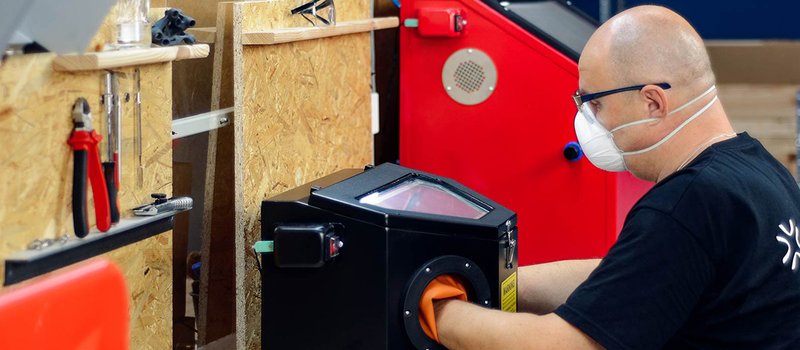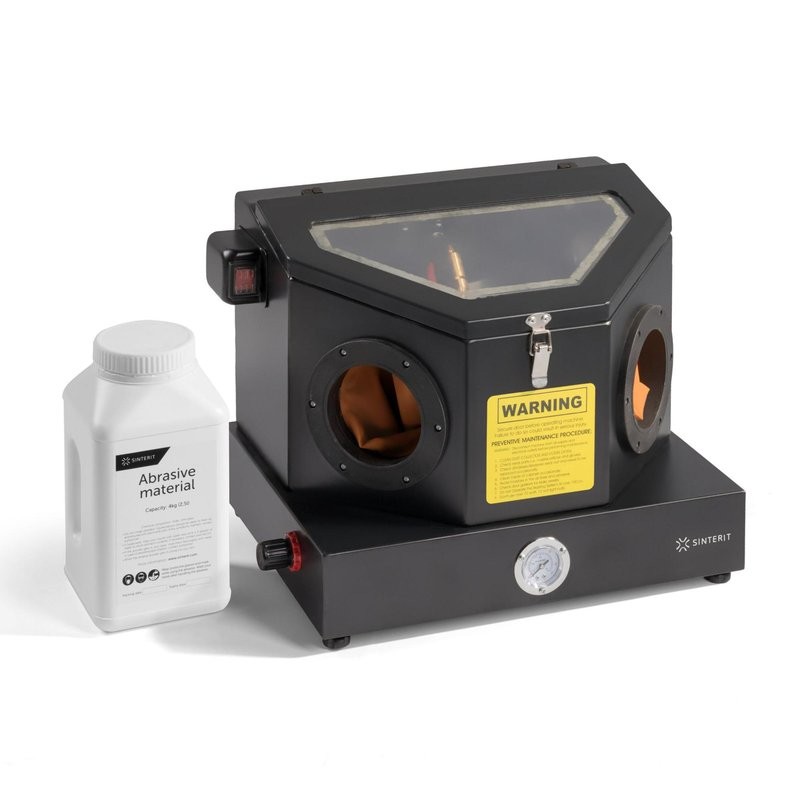The Sinterit Sandblaster is a specialized tool for cleaning, polishing, and finishing of Sinterit printouts with dry abrasive material. It uses compressed air and little glass balls to cover the whole surface of your model and highlight every line and angle.

The Sinterit Sandblaster is equipped with HEPA filtration and full sealing to ensure a completely dustless environment for your safety during post-processing with SLS powders. The built-in pressure meter provides full control over the working parameters leading to extreme accuracy of tiny details. Large working area (410 x 310 x 200 mm) will make the process efficient and convenient.

For some items, package content may change. In case of any questions, please get in touch.
The price of the Sinterit Sandblaster is $850.00, which is reasonable considering its functionality, high accuracy, and compact design.
Update your browser to view this website correctly. Update my browser now